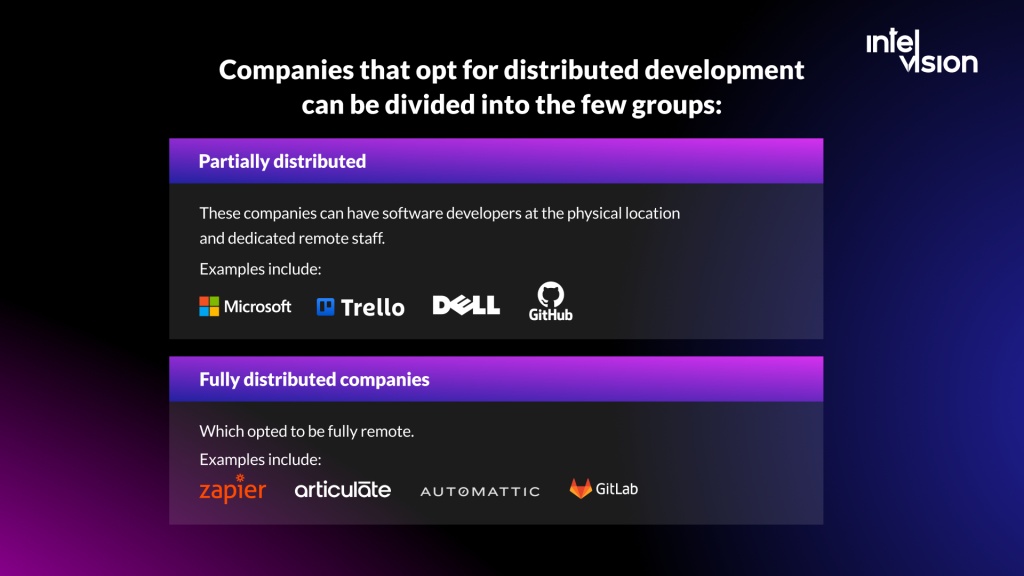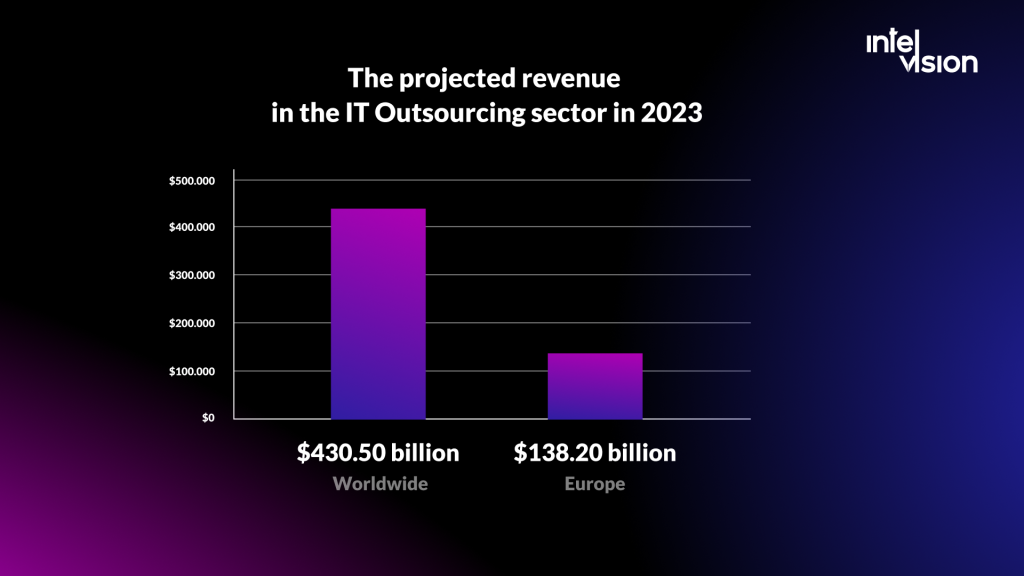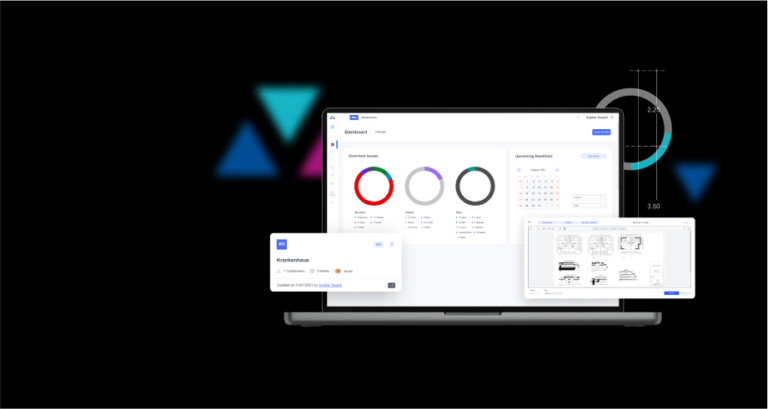
4 Main Advantages of Distributed Development Teams: Business Owners’ Guide
It is a hot topic nowadays: are distributed software development teams as efficient and effective as those that are colocated? We at Intelvision are huge advocates for distributed teams. In this article, we are going to highlight why so many companies around the globe prefer to work with distributed development teams and delegate development processes to the remote team.
What is Distributed Software Development
Distributed software development refers to planning, designing, building, testing, implementing, and managing software with multiple remote engineering teams located across various locations, including different countries or even continents. However, this is quite different from just working remotely. Dropbox sums up the difference on their corporate blog:
“Remote work is a discipline for the individual worker,
but distributed work is a discipline for the entire organization.”
Companies that opt for distributed development can be divided into the few groups:
- Partially distributed—these companies can have software developers at the physical location and dedicated remote staff. Examples include Trello, GitHub, Dell, and Microsoft divisions.
- Fully distributed companies, which opted to be fully remote. The list of firms that use this approach includes Automattic, Zapier, Articulate, and GitLab.
Software Development Teams: Traditional vs. Remote vs. Distributed
Naturally, when at least two specialists are working together to achieve a particular goal set, they can already be called a team. However, managing remote staff regardless of the number of members may seem more complex, but the advantages of remote teams are worth it.
A traditional team is considered as a group of people visiting a physical space, communicating face-to-face, and managing workflows on site. In remote teams, the collaboration and willingness to achieve business goals remain. But the key difference is that remote development specialists may never meet each other personally. They aren’t restricted in where to perform their tasks from.
A distributed software development team largely falls under the definition of a remote one. Yet, distributed development includes some peculiar differences. Irrespective of the number of locations and employees, a distributed software development team is assembled as an indivisible unit for operating in a single project. Specialists use certain communication channels not to feel isolated and avoid fracturing the unity.
Key Advantages of Distributed Software Development
Before contemplating the idea of going distributed, you need to weigh advantages and pitfalls of this operating model first.
Access to a diverse talent pool
According to statistics, the technology market is already facing a severe shortage of tech specialists in IT. Acquiring talents is going to become even harder for companies refusing to go remote and hire distributed development teams.
With a distributed software development approach, you can choose the specialists you need by gaining access to a global pool of talent. You can also add different cultures to your workforce, which can help you adopt and implement new innovative ideas. A research company in the UK has found that diverse remote development teams are 60% better at decision-making, and diverse companies are 35% more likely to have profits above their competitors.
Cost-effectiveness
There are significant savings with distributed development teams. With no office space, companies save money on rent and office-related expenses. For example, an average US company saves over $10,000 yearly per remote employee by rent alone.
What’s equally important, the cost of the services of specialists from different countries can also vary significantly. The US currently stands as a country with the highest salaries for software developers with an average yearly payment of around $100,000. However, there are countries in Eastern Europe such as Ukraine, Romania, and Poland which are placed on the list of countries with the best programmers. Engineers have an average annual salary of $35,000 there.
Increased productivity
Supplying your distributed software development team with global experts undeniably leads to better productivity overall. Additionally, research by Stanford University shows that remote employees have equal or even bigger efficiency than on-site project members.
Better retention and employee satisfaction
Studies by PGI state that 82% of remote workers have much lower stress compared to their in-house colleagues who work in the office all the time or regularly. It enforces a greater retention rate and leads to increased productivity.
Pitfalls and Challenges of the Distributed Development Model
Despite the numerous advantages of distributed teams, this Agile development approach can play a trick on the client. To prevent this from happening, we’ve highlighted the main distributed software development challenges that should be considered when choosing the path of distributed teams for software development.
Communication
Working remotely certainly doesn’t help with communication in the development team. However, over-communicating can be just as bad. Only 34 out of 200 top executives surveyed by Harvard Business Review claimed their meetings were effective.
It is important to strike a balance here in order to keep the specific pace of the distributed development process and the quality of software products. Digital advertising platform Polar has conducted an experiment. The team abandoned meetings on Tuesdays and Thursdays. After a few weeks, 72% of employees noted that they had become more productive, and 100% supported the refusal of meetings.
As Polar’s experience has shown, you and your team will learn to get by with fewer meetups, briefings, and calls. Such a limit will allow you to evaluate which of the meetings you need. You will be able to rethink meeting formats and opt out of some.
Visibility and control
All the distributed development teams must be aware of what each is doing as well as be constantly updated with the current situation. Being able to effectively provide this visibility and control over all actions is a challenge, but this should be implemented to make distributed global teams truly efficient.
Many managers evaluate the distributed software development team’s effectiveness by the number of working hours spent at the computer. Therefore, they implement time trackers for this. Such a tool helps the project manager to determine how productive his employees are and what priorities to place in current tasks. However, you need to be careful when using time trackers, as focusing on time tracking can create a toxic culture and annoying micromanagement that ruins the distributed environment.
It is worth adding that companies such as Amazon, Enron, UnitedHealth Group, and Crossover, clearly overdid it in their intentions to control everything and invaded the personal space of employees. For example, at UnitedHealth Group, low keyboard activity can affect compensation and bonuses.
At the infamous Enron company, cameras took pictures of the employees’ faces and their computer screens every 10 minutes of working time. And it was impossible to predict this moment! If a person was absent, it cost him 10 minutes of the monthly rate.
Employees are increasingly faced with time tracking, and the feedback is by no means positive. There are even videos on TikTok on how to fool tracking systems, including using a “mouse paddle”, a device that simulates activity.
Corporate culture & company values
It is much easier to transmit the company’s goals, values, and communication approaches when employees are in the physical office. With any kind of remote collaboration, it is hard. Having accessible documentation and talking about the company’s values might help with this issue.
Best Practices for Distributed Development Teams
An MIT Sloan Management study found that dispersed teams can outperform groups that are colocated. However, to succeed, virtual collaboration must be managed in specific ways. Here are some of the important strategies to employ.
Establish regular team meetings
Communications experts in the US have calculated that employee loyalty and satisfaction are 90% related to the quality of internal communications in a company. The Society of Human Resource Management found that American businesses with 100 employees lose $420,000 annually due to poor communication culture. In companies with 100 thousand employees, this number is about $62.4 million per year. Therefore, managers and leaders need to schedule regular team meetings as well as face-to-face meetings with individual distributed software development team members since they are crucial to the project’s success.
Adopt face-to-face video onboarding and training
A friendly, non-toxic development team combined with clear onboarding documents is the best way to add new players to your project. Make the onboarding process as comfortable and smooth as possible. For example, two presentations can be sent to a new team member on the first day of work:
- About the company: your mission, goals, and information about each department. It’ll make it clear who is responsible in the team and for what.
- About the first working day: where to ask for access, how to sign documents correctly (if needed), how to get into the working calendar, etc. So that a person understands what he/she will need to do in a day.
According to Glassdoor, companies that have an onboarding process in place increase the productivity of new team members by more than 70%. The good news is: it is quite possible to conduct training or onboarding on the remote. For example, the consulting company Deloitte launched an app for new analysts in 2018. The theme of the online game is a zombie apocalypse. The content is divided into modules. At the end of each of them, beginners receive a code that allows them to unlock the next level. The application pumps consulting and software development skills.
Use digital tools to collaborate and measure/manage distributed development
Truly successful distributed development teams rely on collaboration tools. Distributed teams employ solid messaging tools, a time tracker (optional), a video communication platform, and more. For example, the project collaboration software Asana allows you to plan goals and tasks, assign them to team members, and track progress. And Notion, as conceived by the developers, replaces knowledge bases, document management functions, kanban boards, planners, databases, and other solutions for efficient management processes. Functions of a dozen applications Notion provides within one single platform.
Set the right KPIs for the distributed team
Create shared goals to monitor and celebrate meeting development milestones. Measure production with metrics that determine if your distributed development teams are meeting business needs.
Distributed Development: What to Expect This Year?
According to Statista, the projected revenue in the IT Outsourcing sector will reach US$430.50 billion in 2023 worldwide, and $138.20 billion in Europe.
We should expect a 70% rise in outsourcing software development for startups, which means that the services of distributed software development teams will be more popular than ever in this domain.
Whatever your software development needs may be, we at Intelvision are ready to leverage our experience from completed projects for businesses of all sizes and deliver a tailor-made solution that will ensure success in your particular case. If you need any help with managing and assembling distributed development or if you have any questions on this topic, feel free to book a consultation! We provide software outsourcing services for clients all around the globe.














![$portfolio_img_mobile['title'] $portfolio_img_mobile['alt']](https://intelvision.pro/wp-content/uploads/2022/11/Visoplan.-Mobile-banner-263x350.png)









